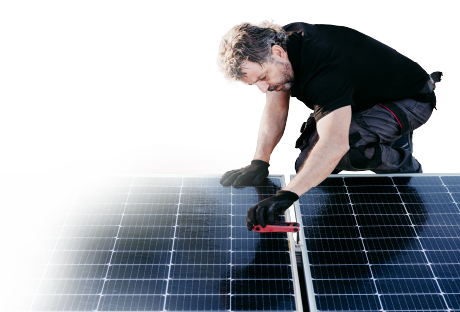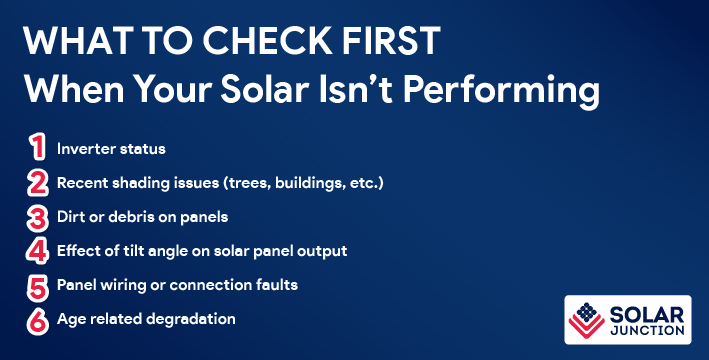Your Solar System Isn't Performing? Here's What to Check First
HOME > Your Solar System Isn't Performing? Here's What to Check First

A well-performing solar system is essential for maximizing your long-term energy savings. But when performance starts to dip, or electricity bills stay stubbornly high, it's time to investigate.
In this blog, we'll walk you through how to diagnose issues with your system, what benchmarks to expect, and how to get things back on track. We'll cover everything with a friendly, expert touch.
Your solar system is an investment in both your home and the planet. Solar system performance determines how much of your energy needs are covered by clean power.
Tracking performance not only ensures you're saving money but also helps you spot issues before they escalate. Regular monitoring prevents small problems from turning into costly repairs or bigger inefficiencies.

Is your system not pulling its weight? Be on the lookout for these warning signs:

The inverter is your system's brain. If it's offline or showing errors (solar panel inverter not working), your panels may not be feeding any energy. Always inspect status indicators and error codes first.
New nearby growth, scaffoldings, or rooftop obstructions can block sunlight. Shading significantly reduces solar system performance, especially during morning or afternoon peaks.
Dust, bird droppings, and leaves reduce output. Gently clean panels or hire a professional and just make sure it's done safely and without abrasive chemicals.
Even small changes to pitch or direction can impact performance. The effect of tilt angle on solar panel output is often overlooked. Ensure panels are oriented to the sun's path across the year.
Brittle or loose wiring and corroded connectors can introduce resistance, slashing system efficiency. If you suspect this, get a licensed electrician to inspect it.
Panels lose efficiency with age; that's natural solar panel efficiency over time. Typical degradation is around 0.5–1% per year, so a 10-year-old system may be operating at 90–95% of its original capacity.
Use these guidelines to assess whether your system is underperforming:
If your current numbers fall well below these figures, it's time for a deeper dive.

If your solar system is more than 8–10 years old and consistently underperforming despite maintenance, it may be time to consider a solar system upgrade. Modern panels offer significantly improved efficiency, and newer inverters come with advanced monitoring tools that help maximize solar system performance.
Additionally, if your household energy needs have increased, such as due to electric vehicle charging or a home extension, expanding your system might be more cost-effective than continuing with an underpowered setup.
Another way to enhance your system’s output efficiency is by adding a solar battery. Even if your panels are generating well, without storage, excess energy sent back to the grid earns you less than what you pay to draw power at night.
By installing a solar battery for home use, you can store surplus energy for evening use, reduce grid reliance, and improve your return on investment.
If your system includes storage, low performance could also signal battery degradation, something worth checking during routine assessments.
Excellent solar system performance isn't just luck; it's the result of regular monitoring, maintenance, and care. If you notice a dip in output or suspect solar panel efficiency over time is declining, act promptly.
Need a professional inspection or help troubleshooting? Solar Junction offers expert diagnostics, maintenance, and post-install support to keep your solar system operating at its best.
Ready for a performance check? Contact Solar Junction today and reclaim your solar savings!

This may point to underperformance; check for shading, cleaning issues, or inverter faults.
Common culprits include shading, dirt build-up, wiring faults, age-related degradation, or solar hot spots.
Yes. Panels degrade naturally at around 0.5–1% per year, reducing output over time.
Look for red or blinking warning lights, error codes, or zero energy production during daylight.
Use your inverter's monitoring app or ask your installer for performance reports.
Monthly checks are ideal; pair that with an annual professional inspection.
